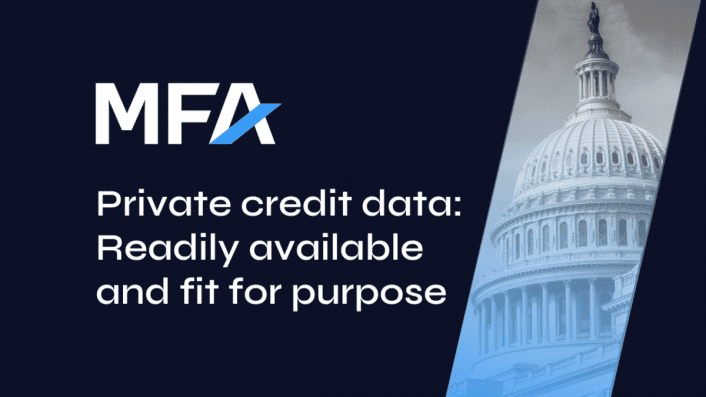Private credit direct lending plays a critical role in the American economy by providing businesses with over $1 trillion in capital. This capital enables companies to invest, expand, and innovate. It also enhances financial stability by removing risk from highly interconnected depository institutions.
Yet, there are still many misconceptions about private credit direct lending, including the claim that data surrounding it is not readily available to regulators. MFA dispels this myth in a new research paper that outlines the myriad of information that private credit funds provide to state and federal regulators.
Public Information Filings
As outlined in the paper, the first way in which private credit direct lending data is made available is through public filings to federal and state regulators and officials to comply with existing business regulations. These reports include:
- BDC reports, which are filed with the U.S. Securities and Exchange Commission (SEC) and include detailed information on individual portfolio holdings.
- Uniform Commercial Code (UCC) filings, which are filed with state officials and notify all creditors of lenders’ security interest in the underlying collateral.
- State insurance filings, which are filed with insurance regulators and enable insurance regulators to monitor compliance with liquidity and investment quality requirements.
Nonpublic Submissions for Regulators
In addition to public information, private credit direct lending funds also file reports with regulators of the financial services industry. These filings allow regulators to track the health of private credit funds. These filings include:
- Bank call reports, which are filed with banking regulatory agencies so that they can examine bank lending to counterparties, like private credit funds.
- Form PF, which is filed with the SEC and enables regulatory bodies to monitor private fund activities and potential financial stability risks.
- State lending licensing and reporting requirements, which allow state regulatory authorities to ensure compliance with consumer protection requirements and lending laws.
Insights from these information submissions can help regulators better utilize existing data sets and coordinate amongst themselves when appropriate, without disrupting the benefits private credit offers to Americans. The full MFA research paper on private credit data availability can be found here.
